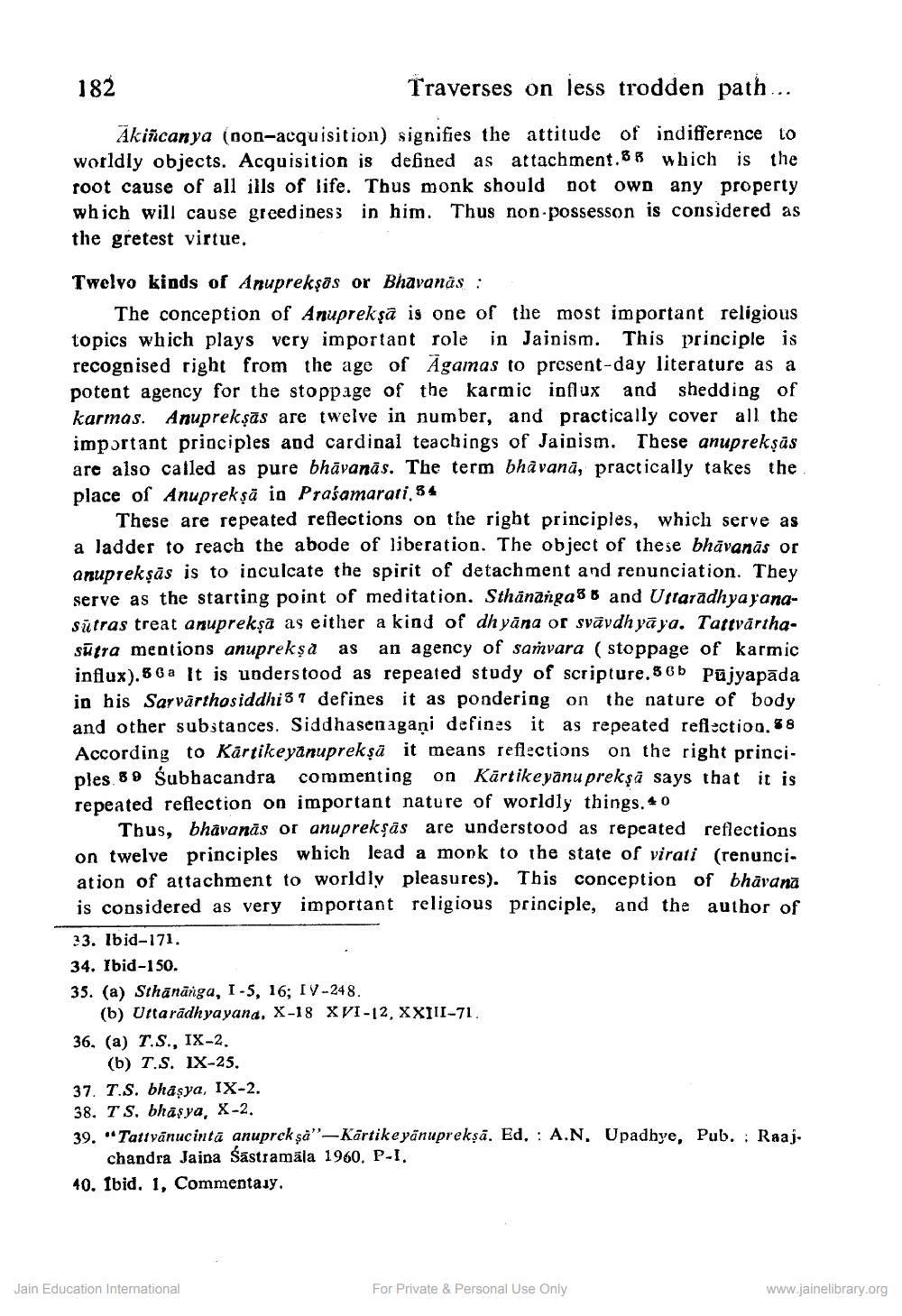________________
182
Traverses on less trodden path...
Akiñcanya (non-acquisition) signifies the attitude of indifference to worldly objects. Acquisition is defined as attachment. 88 which is the root cause of all ills of life. Thus monk should not own any property which will cause greedines in him. Thus non possesson is considered as the gretest virtue.
Twelvo kinds of Anuprekșas or Bhavanas :
The conception of Anuprekşā is one of the most important religious topics which plays very important role in Jainism. This principle is recognised right from the age of Agamas to present-day literature as a potent agency for the stoppage of the karmic influx and shedding of karmas. Anuprekşās are twelve in number, and practically cover all the important principles and cardinal teachings of Jainism. These anuprekşās are also called as pure bhāvanās. The term bhāvanā, practically takes the place of Anuprekşă io Praśamarati. 84
These are repeated reflections on the right principles, which serve as a ladder to reach the abode of liberation. The object of these bhāvanās or anuprekşās is to inculcate the spirit of detachment and renunciation. They serve as the starting point of meditation. Sthänānga38 and Urtaradhya yanasūtras treat anuprekșa as either a kind of dhyāna or svāvdhyāya. Tattvärthasūtra mentions anuprekşå as an agency of samvara ( stoppage of karmic influx).56 a It is understood as repeated study of scripture.86b Pajyapāda in his Sarvarthosiddhi3 7 defines it as pondering on the nature of body and other substances. Siddhasen agaội defines it as repeated reflection. 58 According to Kartikeyanuprekșä it means reflections on the right principles. 8 9 śubhacandra commenting on Kārtikeyanu prekşā says that it is repeated reflection on important nature of worldly things. 40
Thus, bhāvanās or anuprekşås are understood as repeated reflections on twelve principles which lead a monk to the state of virati (renunci. ation of attachment to worldly pleasures). This conception of bhāvana is considered as very important religious principle, and the author of 23. Ibid-171. 34. Ibid-150. 35. (a) Sthanānga, 1.5, 16; IV -248.
(b) Uttaradhyayana, X-18 XVI-12, XXIII-71. 36. (a) T.S., IX-2.
(b) T.S. IX-25. 37. T.S. bhâsya, IX-2. 38. TS. bhâsya, X-2. 39. "Tattvānucintă anuprck şa"-Kārtikeyānupreksā. Ed. : A.N. Upadhye, Pub. : Raaj.
chandra Jaina Šāstramāla 1960, P-I. 40. Ibid. 1, Commentaiy.
Jain Education International
For Private & Personal Use Only
www.jainelibrary.org




